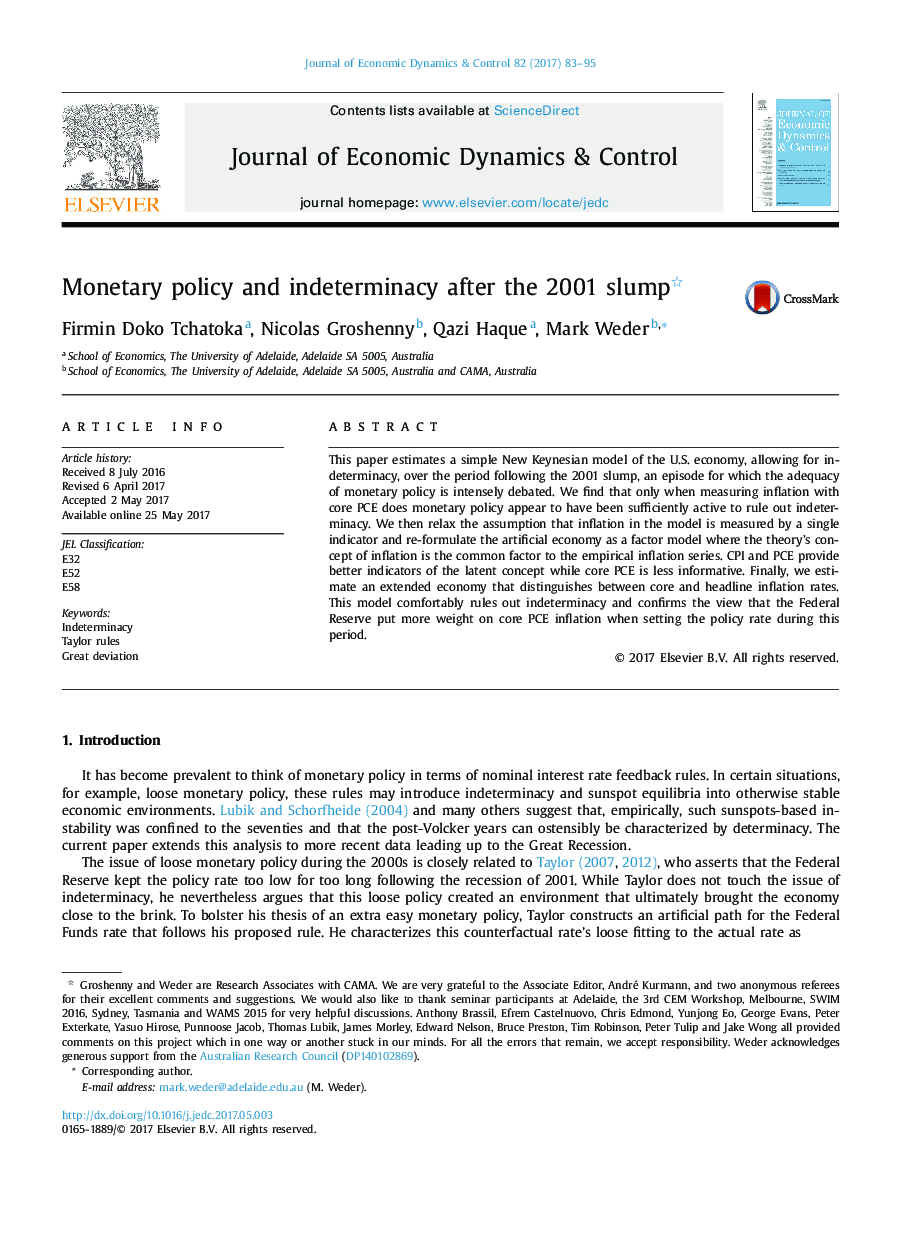| Article ID | Journal | Published Year | Pages | File Type |
|---|---|---|---|---|
| 5097975 | Journal of Economic Dynamics and Control | 2017 | 13 Pages |
Abstract
This paper estimates a simple New Keynesian model of the U.S. economy, allowing for indeterminacy, over the period following the 2001 slump, an episode for which the adequacy of monetary policy is intensely debated. We find that only when measuring inflation with core PCE does monetary policy appear to have been sufficiently active to rule out indeterminacy. We then relax the assumption that inflation in the model is measured by a single indicator and re-formulate the artificial economy as a factor model where the theory's concept of inflation is the common factor to the empirical inflation series. CPI and PCE provide better indicators of the latent concept while core PCE is less informative. Finally, we estimate an extended economy that distinguishes between core and headline inflation rates. This model comfortably rules out indeterminacy and confirms the view that the Federal Reserve put more weight on core PCE inflation when setting the policy rate during this period.
Keywords
Related Topics
Physical Sciences and Engineering
Mathematics
Control and Optimization
Authors
Firmin Doko Tchatoka, Nicolas Groshenny, Qazi Haque, Mark Weder,
